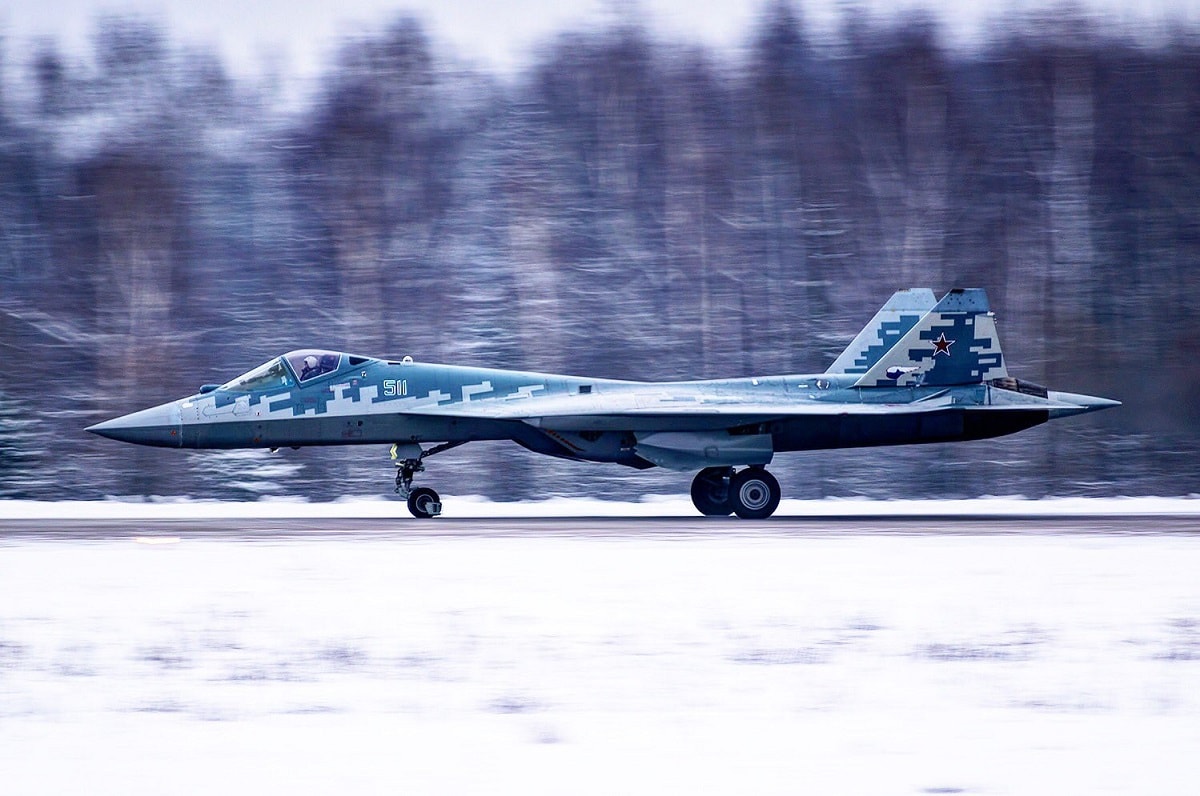Last month, the Russian Sukhoi Design Bureau announced that it would test a two-seat version of the Su-57 fifth-generation combat aircraft with four S-70 “Okhotnik” heavy strike drones. The modified aircraft will be used to control a swarm of combat drones, which will serve as a type of wingman for the twin-engine multirole jet fighter.
“In order to control advanced Okhotnik drones, a two-seat command variant of Su-57 will be created,” a defense industry source told Tass on Tuesday. “The fighter jet, already in development, is presumed to control about four Okhtonik drones.”
The press office for the Russian United Aircraft Corporation (UAC) had previously told Tass that the latest Okhotnik drone had the capability to strike aerial and ground targets in network-centric interaction with a Su-57 fighter. In their joint employment with the fifth-generation fighter, Okhotnik drones will deal with a full range of tasks, striking aerial and ground targets under the command of a Su-57’s pilot, the report from Tass added.
Multirole Aircraft
The Sukhoi Su-57, which is essentially an evolution of the Su-27 Flanker with low radar observability and enhanced maneuverability, was designed for air superiority and attack operations. Development of the aircraft began in 2002, but progress was slow due to financial constraints in Russia, and it wasn’t until January 2010 that the fighter took its maiden flight.
It was also the first Russian combat aircraft to utilize stealth technology, which includes a broad use of composite materials, while it was also designed with supercruise, supermaneuverability, and advanced avionics to overcome attacks from the prior generation fighter aircraft as well as ground and naval defenses. The Su-57 further offers a supersonic cruise speed, internal weapons bays, radio-absorbing coating, and the newest onboard equipment.
The Russian military only took delivery of the first of the fifth-generation aircraft last year, and Russia’s Aerospace Force has announced that it is on track to acquire twenty-two Su-57 fighters by late 2024, with the fleet set to increase to seventy-six in total by 2028.
Drone Wingman
While the Su-57 has been described as a “fifth-generation” fighter, there have been some questions as whether it is in fact really just an advanced fourth-generation fighter. The addition of the drone capabilities could be a significant game-changer for the aircraft’s capabilities.
The S-70 Okhotnik heavy attack drone’s development hasn’t been as protracted as the Su-57. It performed its debut flight on August 3, 2019, lasting more than 20 minutes under an operator’s control. Just weeks later, the S-70 performed its first flight together with a Su-57 fifth-generation fighter jet. According to Tass, the drone was able to maneuver in the air in an automated mode at an altitude of around 1,600 meters, while that flight lasted over 30 minutes.
The Oknotnik can fly up to 1,000 kilometers per hour and features stealth technology, which includes materials that reduce its radar signature while it features a flying wing/tail-less design. The drone is also outfitted with equipment for electro-optical, radar, and other types of reconnaissance.
Serial deliveries of Okhotnik heavy strike drones to the Russian troops are scheduled to begin in 2024.
Peter Suciu is a Michigan-based writer who has contributed to more than four dozen magazines, newspapers, and websites. He regularly writes about military small arms and is the author of several books on military headgear including A Gallery of Military Headdress, which is available on Amazon.com.

